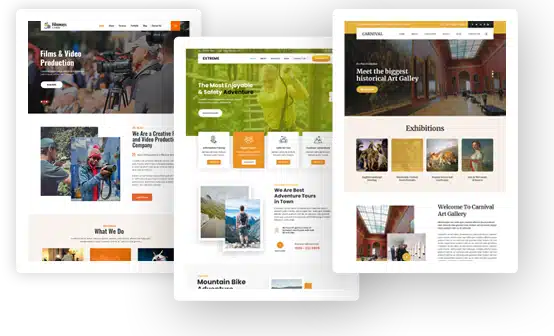How Mobile Responsiveness Directly Affects Your SEO Rankings

Mobile devices dominate online engagement for many users. Customers increasingly choose mobile devices for their ease of use and accessibility, even over larger-screen desktops, in a world with ubiquitous Wi-Fi and internet connections. Smartphones and tablets are being used to surf websites and make purchases while waiting for appointments, checkout lines, or work breaks.
This is easier, faster, and more enjoyable with apps. This transformation affects how firms build their online presence, notably websites. Instead of constructing separate mobile and desktop sites, search engines like Google, which controls 90+% of search traffic, favor mobile-friendly sites since they improve user experience. Mobile optimization is crucial for SEO results and organic visitors. Understanding and using mobile SEO boosts visibility, traffic, and conversions. Mobile optimization’s impact on SEO rankings, user experience, pitfalls, and best practices for mobile-friendly websites are discussed in this article.
What is mobile SEO?
Mobile SEO optimizes a website for mobile devices. This includes making the site easy to navigate, fast loading, and easy for tiny displays.
Google’s mobile-first indexing rules promote ranking and indexing mobile websites above desktop ones; therefore this is the main goal.
Websites must adopt responsive design, optimize images for faster load times, and make content and interactive components easier to read and use on smaller devices for strong mobile on-page SEO.
Mobile SEO is about usability and aesthetics. Poor user experience can hurt search rankings if you don’t prioritize this.
Why Mobile Optimization Matters for SEO?
Optimization for mobile devices is now essential for SEO. Mobile-friendly websites have been preferred in search results since Google’s 2015 “Mobilegeddon” update and 2019 mobile-first indexing. High Stack Solutions provides full-stack web development to make your website mobile-optimized, efficient, safe, and future-ready. You can improve SEO and user satisfaction by providing a smooth experience across all devices with their help.
Key Aspects of Mobile Optimization
-
Web Responsiveness
On diverse screens and devices, an adaptive web design allows users navigate without zooming or scrolling. Responsive web design employs a single URL for mobile and desktop pages, increasing SEO rankings, minimizing duplicate content, simplifying site management, and improving user experience by automatically altering layout and design.
Most websites are responsive because Google prefers it. Use responsive grids, fluid image rendering, and CSS that supports multiple screen widths while changing the template.
-
Page Speed/Load Time
Page speed and load time affect SEO and user pleasure. Studies suggest that many mobile users quit a page that takes more than three seconds to load. Google’s Core Web Vitals (accessible through Search Console) enables webmasters to analyze site and page load speed to enhance them.
Compress and optimize images to reduce file sizes without sacrificing quality, minimize JavaScript and CSS files, use a Content Delivery Network (CDN) to speed up loading times, enable browser caching to store frequently accessed elements, and reduce unnecessary redirects to improve page speed.
-
Webcore Vitals
Mobile navigation is very different from desktop. A straightforward UI and intuitive menus are expected. A logical menu, large, tappable buttons to avoid unintentional clicks, fewer pop-ups to improve user experience, and a prominent search function are mobile-friendly navigation best practices.
-
Clear, Interesting Content
Content drives SEO rankings. Text-heavy pages are overpowering on any screen, but smaller screens have higher bounce rates. Short paragraphs, large fonts, subheadings, bolded keywords, and organized data boost readability and search engine visibility across platforms. Use em (proportion of screen) instead of pixels to resize images to fit the screen.
-
Touch-friendly UX for Mobile
Touch is used to navigate mobile websites. A badly designed site with tiny buttons or closely packed features might annoy users and increase desertion. Increase button size to support touch motions, space out clickable items to prevent inadvertent taps, and make forms mobile-friendly with auto-fill to maximize mobile UX.
-
Interstitial Avoidance
Google penalizes websites with content-blocking pop-ups. These frustrate consumers and block material access regardless of screen size. Use small, dismissible banners instead of full-screen pop-ups, only show necessary pop-ups when they’re useful (such as age verification or GDPR compliance), and time pop-ups to appear when visitors engage with the content.
-
Local SEO Optimization
Mobile searches often target local companies. Local SEO is crucial for mobile optimization. To improve local SEO, complete and update your Google Business Profile, include location-specific keywords in content and meta descriptions, encourage customer reviews to build trustworthiness, and use schema markup to supply search engines with detailed business information.
Your website must also meet user intent. Display the location (ideally linked to readily locate the location on a mobile device), phone number, and hours of operation prominently on the homepage for mobile users.
Avoid these Mobile Optimization Blunders
- Allow full access to JavaScript, CSS, and image files so that search engines can properly index them.
- Avoid using Flash because it is old and unsupported on many platforms; instead, choose HTML5.
- To increase mobile usability, ensure that mobile users are redirected to the appropriate pages.
- To ensure a smooth user experience, check for and fix broken links on a regular basis.
- Compress and optimize photos, movies, and other multimedia to improve mobile page load times.
Conclusion
Mobile friendliness is becoming required for SEO websites. Search engine optimization now requires mobile friendliness. Search rankings are affected by mobile optimization due to Google’s mobile-first indexing, user experience, page speed, and engagement. Mobile-unfriendly websites risk lower ranks, engagement, and visibility.
As mobile internet usage develops, businesses must provide an excellent mobile experience to satisfy customers and search engines. Mobile optimization boosts traffic, conversion rates, and SEO effectiveness beyond technical requirements.

